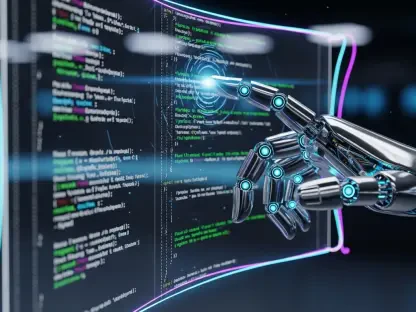The recent Crowdstrike-related outage has thrown a spotlight on the complexities and risks inherent in modern digital systems. Though the incident, involving a content configuration update for Crowdstrike’s Falcon Windows sensor, affected 8.5 million Windows devices, it holds valuable lessons for future prevention. This article explores recommendations from the BCS Software Testing Specialist Group (SIGiST), focusing on quality assurance, security governance, robust development practices, and the indispensable role of human oversight.
Introduction to the Crowdstrike Incident
A seemingly innocuous update led to widespread disruption, underscoring the dire need for stringent quality and security measures. The incident emphasized the necessity of robust software development and meticulous maintenance practices to prevent such failures. As digital ecosystems grow increasingly complex and interconnected, the stakes for maintaining system integrity have never been higher. Successful prevention hinges not just on technological solutions but also on organizational practices, accountability, and a culture of continuous learning and improvement.
Root Cause Analysis and Solutions Focus
The Importance of Root Cause Analysis
Understanding the root cause of a problem is crucial for developing effective solutions. Rather than assigning blame, a systematic approach to identifying underlying issues allows teams to implement corrective actions that can preempt future incidents. Prevention stems from thorough analysis and a commitment to learning from failures. By focusing on the mechanisms that led to the outage, organizations can design better safeguards and preventive measures.
A systematic root cause analysis involves dissecting every layer of the problem to understand what went wrong. This deep dive helps identify both the immediate triggers and the underlying systemic weaknesses that allowed the issue to occur. By addressing these root causes, rather than simply the symptoms, organizations can create stronger, more resilient systems less susceptible to future mishaps.
Emphasizing Solutions Over Blame
Addressing the root cause requires a culture shift that prioritizes solutions over blame. This positive approach encourages open discussion and collaboration, which are essential for comprehensive problem-solving and continuous improvement. In environments where blame is the default reaction, team members may hide issues or avoid taking risks, hindering innovation and problem resolution.
Creating a culture that emphasizes solutions involves promoting transparency and encouraging team members to come forward with mistakes or concerns without fear of retribution. This openness can lead to more creative and effective problem-solving, as multiple perspectives are considered. Moreover, it helps build trust and fosters a sense of shared responsibility, crucial for any successful long-term strategy in software development and maintenance.
Proactive Measures for Software Integrity
Threat Modeling and Compliance
Threat modeling plays a crucial role in preemptively identifying and mitigating risks. By understanding potential threats, organizations can design more secure systems and policies, ensuring compliance with industry standards. Threat modeling is not a one-time task but an ongoing process that evolves with the changing digital landscape. It involves envisioning various attack scenarios and vulnerabilities, enabling organizations to develop countermeasures before an attacker can exploit them.
In addition to threat modeling, reinforcing quality and security compliance through internal audits and evaluations helps maintain high standards. Regular checks and balances ensure that practices evolve alongside emerging threats. These activities are essential for catching lapses early and maintaining an up-to-date defense posture. Compliance isn’t merely about following rules but about creating a culture of excellence where quality and security are ingrained in every facet of development and operations.
Regular Evaluations and Internal Audits
Consistent scrutiny through evaluations and internal audits is pivotal to identifying vulnerabilities. Such practices help organizations stay ahead of potential threats and implement timely updates to bolster security and performance. Regular audits offer a structured approach to examining the integrity and robustness of software systems, providing insights into possible weak points that may not be immediately obvious.
Both automated tools and manual assessments are valuable in these audits. Automated tools can quickly scan for known issues or anomalies across large datasets, offering a broad overview. In contrast, manual audits bring a nuanced perspective, allowing for the identification of complex issues that require human judgment to assess. Together, these methods create a well-rounded approach to maintaining high standards of software integrity.
Integrating AI and Machine Learning
Benefits of AI in Development and Testing
AI and machine learning offer unparalleled efficiency and innovation in software development, testing, and deployment. These technologies can automate repetitive tasks, quickly process large datasets, and identify patterns that may elude human analysts. By leveraging AI, companies can significantly reduce the time and effort required for routine testing and maintenance, allowing human experts to focus on more strategic and creative tasks.
However, while beneficial, these technologies should complement human expertise, not replace it. The integration of AI should be balanced with human oversight to ensure comprehensive and nuanced problem-solving. AI can provide invaluable assistance in data analysis and task automation, but it lacks the contextual understanding and flexibility that human judgment brings. Therefore, a hybrid approach that combines the strengths of both AI and human intelligence is advisable for achieving the best outcomes.
Human Oversight in a High-Tech World
Human input remains vital, especially in identifying and addressing complex, context-specific issues. Automated tools and AI are highly efficient but lack the contextual understanding and judgment that experienced human professionals provide. Human oversight ensures that nuances and subtleties, which automated systems might miss, are appropriately addressed. This becomes particularly important in dynamic environments where changes can introduce unforeseen consequences.
Maintaining a balanced approach that leverages both AI capabilities and human expertise is essential for robust system management and problem resolution. Human oversight acts as a safeguard, ensuring that automated systems function correctly and effectively while mitigating risks associated with over-reliance on technology. This hybrid strategy not only enhances system reliability but also fosters innovation by allowing humans to focus on higher-order problem-solving and creative tasks.
Building a Resilient Software Development Culture
Promoting Responsibility and Accountability
Fostering a culture where accountability is clearly defined encourages team members to take ownership of quality assurance and security. Clear roles and responsibilities ensure that all aspects of development and testing receive the attention they require. When team members know what is expected of them and understand the impact of their work on the overall system, they are more likely to be diligent and proactive.
Reinforcing accountability can mitigate risks and enhance the reliability of software products, leading to more resilient overall systems. It promotes a sense of responsibility and pride in one’s work, driving higher standards of performance. Additionally, when accountability is clearly established, it becomes easier to track progress and identify areas for improvement, enabling continuous growth and development in the team’s capabilities.
Encouraging Open Discussions
A culture of openness, where issues are freely aired and addressed, promotes continuous improvement. Organizations should encourage teams to discuss problems without fear of blame, fostering a creative and proactive atmosphere. When team members feel safe to voice concerns and share insights, it leads to more thorough problem identification and innovative solutions. Open discussions also facilitate better communication and collaboration, as team members learn from each other’s experiences and expertise.
Such an environment helps teams swiftly identify root causes and implement effective solutions, thereby enhancing overall system resilience. It builds a foundation of trust and mutual respect, essential for handling complex challenges and navigating uncertainties. By fostering a culture of transparency and openness, organizations can create a more adaptive and resilient software development process, better equipped to handle future disruptions.
Implementing Resilience and Failover Processes
Designing Robust Resilience Mechanisms
Robust resilience mechanisms, including failover processes, are essential to maintaining system integrity during unexpected disruptions. Designing these mechanisms involves both automated and manual checks to ensure they function correctly under various scenarios. Failover processes are critical for maintaining continuity, allowing systems to switch seamlessly to backup solutions in the event of a failure.
Organizations should validate these processes through rigorous testing to ensure reliability when issues arise. Comprehensive tests simulate various failure scenarios to assess how well the resilience mechanisms perform under stress. This validation helps identify potential weaknesses and areas for improvement, ensuring that the failover processes are robust and effective in real-world conditions.
The Role of Automated and Manual Audits
Automated audits provide quick, consistent evaluations, while manual audits offer thorough, context-sensitive assessments. Combining both methods ensures a comprehensive approach to identifying and addressing potential vulnerabilities. Automated tools can scan large volumes of data to detect patterns and anomalies swiftly, providing a broad overview that highlights areas needing further investigation.
Manual audits, conducted by skilled professionals, delve deeper into these flagged areas, offering detailed analysis and insights that consider the broader context. This dual approach creates a balanced and effective audit process, enabling organizations to maintain high standards of security and performance. Regular audits can help organizations stay proactive, catching issues before they escalate into more significant problems, thereby maintaining system resilience and reliability.
Trends in Digital Systems
Growing Capabilities and Interdependencies
Digital systems are becoming more capable and interconnected, with AI playing an increasingly central role in their operation. This evolution demands a balanced approach to integrating new technologies with traditional methods and human oversight. As AI and machine learning technologies advance, they offer unprecedented capabilities in data processing, analysis, and automation, revolutionizing various aspects of software development and operation.
Staying abreast of these trends and adapting practices accordingly is crucial for maintaining robust, secure systems. Organizations must be agile in their approach, continuously refining their strategies to leverage new technological advancements while mitigating associated risks. This proactive stance ensures that they remain competitive and resilient in an ever-evolving digital landscape.
Continuous Development and Improvement
Continuous development and improvement are vital in a rapidly evolving digital landscape. Organizations must remain vigilant, constantly refining their practices to address emerging threats and challenges effectively. By adopting a mindset of continuous improvement, they can ensure that their systems remain robust and resilient, capable of adapting to new demands and conditions.
Cultivating a culture of continuous learning and adaptation is key to developing resilient, user-centered software. This involves encouraging team members to seek out new knowledge, experiment with innovative solutions, and learn from both successes and failures. By fostering this growth mindset, organizations can stay ahead of the curve, continuously enhancing their capabilities and maintaining high standards of performance and security.
SIGiST’s Guidelines for Future Safety
Reinforcing Quality and Security Compliance
Establishing and maintaining stringent compliance standards, clearly assigning accountability, and ensuring regular evaluations are critical steps in reinforcing quality and security protocols. Adopting a rigorous approach to compliance helps build a robust framework that can withstand various challenges and threats. Organizations must prioritize these aspects to ensure that their systems are not only compliant with industry standards but also tailored to meet specific organizational needs and contexts.
Regular evaluations and internal audits provide ongoing assurance that practices are effective and up to date. These processes help identify gaps and areas for improvement, allowing organizations to address potential issues proactively. Additionally, by fostering a culture of accountability, organizations can ensure that every team member understands their role in maintaining quality and security, leading to more reliable and resilient software development.
Establishing Robust Resilience and Failover Processes
Ensuring that systems can quickly recover from disruptions and maintain continuity is essential for resilient software development. Robust resilience and failover processes are critical components of this approach. Organizations should design and implement these mechanisms carefully, validating their effectiveness through rigorous testing and assessment. Robust resilience strategies involve creating redundant systems, implementing automated recovery processes, and conducting regular drills to prepare for various failure scenarios.
By establishing and maintaining these processes, organizations can minimize downtime and maintain service continuity during unexpected events. This proactive approach not only enhances system reliability but also builds trust with users, who can rely on the organization to provide consistent and uninterrupted services.
Creating a Culture of Openness and Continuous Improvement
Fostering a culture of openness, where issues are freely discussed and addressed, is vital for continuous improvement. Encouraging team members to voice concerns without fear of blame promotes transparency and collaboration. This open environment allows organizations to swiftly identify root causes and implement effective solutions, thereby enhancing overall system resilience. Continuous improvement involves regularly assessing practices, seeking feedback, and making iterative enhancements to processes and systems.
By cultivating this culture, organizations can stay adaptive and resilient, better equipped to handle the complexities and challenges of the modern digital landscape. This proactive approach ensures that they remain competitive and capable of delivering high-quality, user-centered software products.
Conclusion
The recent outage linked to Crowdstrike has highlighted the intricacies and risks of modern digital systems. This incident, which involved a content configuration update for Crowdstrike’s Falcon Windows sensor, impacted 8.5 million Windows devices. Despite the significant disruption, it offers valuable lessons for preventing similar events in the future.
This article delves into recommendations from the BCS Software Testing Specialist Group (SIGiST). These suggestions underscore the importance of quality assurance, effective security governance, and robust development practices. Quality assurance is essential to ensure that software functions correctly and meets user expectations. Security governance entails the frameworks and policies that protect digital assets from threats and vulnerabilities. Robust development practices refer to the methodical approaches in software design and coding that enhance reliability and performance.
Additionally, the incident underscores the irreplaceable role of human oversight. Although automated systems can handle many tasks, human judgment is crucial in monitoring and decision-making processes to catch potential problems that machines might overlook. The integration of technology and human expertise can provide a comprehensive defense against system failures, ensuring a more resilient digital infrastructure.









